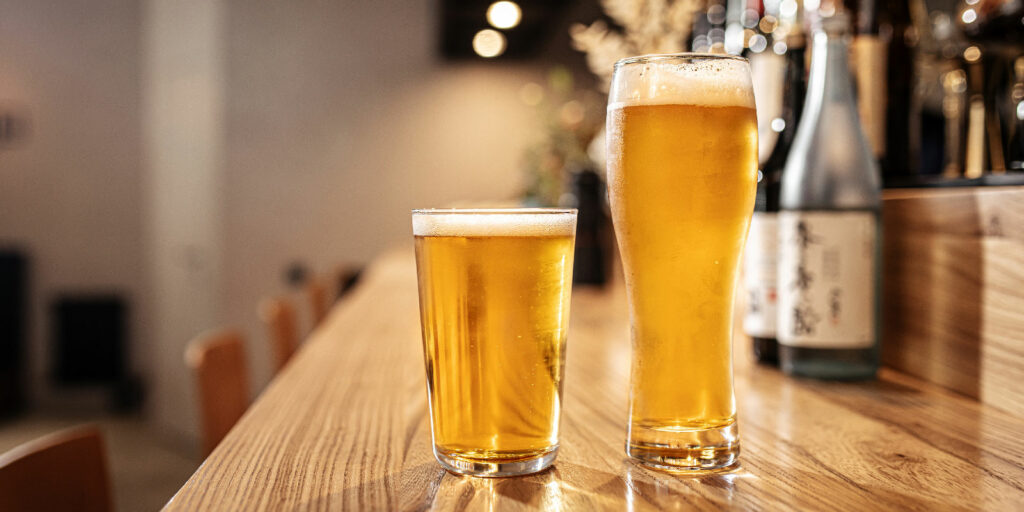It’s the most popular beer in pubs nationwide, but did you know you can homebrew lager that’s just as good?

There are several styles of lager to choose from, and several high-quality homebrew lager kits are available at Get Er Brewed. So first, you’d better decide what kind of lager you want to make. Are you looking for a continental lager, like a Sagres or a Peroni? Do you want to fill your fridge full of German or Czech-style pilsners? Or are you a fan of special-strength lagers that give you a little more bang for your buck?
Whatever you decide, ensure you have enough space and time to homebrew your lager. Brewing a lager is a different experience from brewing any other beer style. We advise reading the instructions carefully if you’re using a homebrew kit. If you’re choosing to go all grain, double and triple-check your recipe before you get started. And whatever you’re doing, make sure your equipment is sparkling clean. But you do that anyway, right?
Is it hard to homebrew Lager?
Yes, lagers are hard to brew, or at least they can be if you’re unprepared. They are known as one of the most complex beers to homebrew. Their flavour is meant to be crisp, clean, and uncomplicated because there is nowhere to hide any faults or mistakes. If you’ve accidentally infected your beer while you were bottling, or something’s gone on with the yeast as you fermenting, you can tell. And your friends might be polite, but they’ll be able to tell as well.
However, making a great-tasting lager is not tricky once you’ve cracked the basics. The main challenge is finding the ideal spot for your lager to ferment at a consistent temperature. Then, continue “lagering” for an adequate number of weeks at a consistently cool temperature. Get these factors correct, and you’ll be laughing.
How long does it take for lager to ferment?
Lager ferments in 4 to 10 days, and if you’re fermenting at a much cooler temperature, it can take up to 14 days. It’s all part of the homebrew hobby process—you must keep an eye on the living, breathing yeast in your lager. Also, keep a close eye on the other markers showing your lager is ready to stop fermenting, like clarity and a slowing of bubbles in the airlock.
Some homebrewers recommend adding a “diacetyl rest” to the fermentation time to allow the lager to rid itself of any diacetyl flavours and aromas. You also need to “lager” your lager once the fermentation is over—a stage of maturation where the yeast settles or has been filtered out, and the beer is allowed to reach its optimum level of clarity and rid itself of any unwanted chemical compound aromas or flavours. Traditionally, this was done in caves over the summer. You don’t have to do it in caves if you don’t want to.

What makes lager different from beer?
Lager isn’t different from beer—it is a type of beer! Unlike real ale, however, lager is light and usually fairly simple in flavour and aroma. Its purpose is to refresh and quench your thirst.
Lager is also traditionally carbonated, which can be achieved in two different ways at home.
Secondary fermentation: Add fresh yeast or carbonation drops to the lager as you bottle it to restart the fermentation stage. When you seal the bottle or cap it, the Co2 produced by the yeast as it converts sugars into alcohol has nowhere to go and dissolves into the beer. After the process, when you open the bottle, your lager will be carbonated.
Forced carbonation: Carbonate your lager using Co2. Siphon off your finished lager into a corny keg and use a Co2 canister or bottle to force carbonation into your beer. And that’s all she wrote. Get Er Brewed has all the equipment you need to force carbonate your lager.
LINKS:
Ingredient Kits:
The post How to Homebrew Lager appeared first on Get Er Brewed Blog.